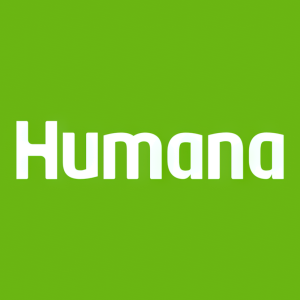Report: 22 Million U.S. Seniors Lack Broadband Internet Access; First Time Study Quantifies Digital Isolation of Older Americans as Pandemic Continues to Ravage Nation
Older Adults Technology Services, Inc. (OATS), in partnership with the Humana Foundation, today released a new report that for the first time quantifies the size and degree of the digital isolation crisis among seniors in the United States, finding nearly 22 million older Americans continue to lack broadband access at home. Stressing the importance of digital health tools and social connectedness amid the coronavirus pandemic, OATS and The Humana Foundation are launching a new effort to close the technology adoption gap through Aging Connected – a national campaign to bring at least a million older Americans online with high-speed internet by 2022.
The report – Aging Connected: Exposing the Hidden Connectivity Crisis for Older Adults – commissioned new research by two leading academics on the digital technology gap: John Horrigan from The Technology Policy Institute and Erin York Cornwell from Cornell University. Drawing on this new analysis, as well as more than 15 years of applied learning at OATS, the report presents a detailed portrait of digitally disconnected older adults in America, touching on how many people remain offline, which demographics are disproportionately affected, and more.
“America’s older population is facing a public health crisis as the digital divide restricts their ability to stay healthy, meaningfully engaged, and financially secure amid the pandemic and beyond,” said Thomas Kamber, executive director of Older Adults Technology Services. “This new research shows that America is failing to close the digital gap for older adults, who more than ever need the tools to be connected and engaged online. Through our nationwide Aging Connected initiative, OATS looks forward to working with nonprofit organizations, corporate partners, and government policymakers to close the technology gap and expand affordable, quality broadband opportunities for America’s seniors.”
“The data is clear: Older adults have been falling increasingly behind in digital connectivity, which negatively affects their overall health and well-being,” said U.S. Senator Kirsten Gillibrand (D-NY). “OATS’ new Aging Connected campaign is playing a critical role in bringing together public and private stakeholders to make sure American seniors can continue thriving – especially during a pandemic that has kept so many stuck at home. We need lawmakers in Washington and across statehouses to act to increase affordable access to broadband services and help millions of seniors stay engaged online.”
Key findings from the study include:
- Nearly 22 million American seniors do not have wireline broadband access at home, representing 42 percent of the nation’s over-65 population.
-
More than
80% of COVID deaths in the U.S. have been older Americans. OATS estimates that approximately40% of them were unable to access needed online resources from home during the pandemic. - Technology is exacerbating social divisions and inequalities. OATS’ research found disturbing correlations between digital disengagement and race, disability, health status, educational attainment, immigration, rural residence, and income.
- A review of existing digital inclusion efforts targeting seniors found a hodgepodge of offerings, with large sections of the country served by no significant low-cost offerings or age-friendly initiatives. The programs that do exist are virtually all sponsored by telecommunications companies in collaboration with nonprofit partners, with no direct public sector support.
- Poor broadband not only limits access to essential public health information, social services, and digital healthcare services like telehealth and apps that manage chronic conditions, but it can also lead to risk of social isolation, which has been linked to negative health outcomes, reduced quality of life and premature death.
- Evidence shows that public-private partnerships can not only increase connectivity access, but also produce positive social outcomes as a result of increased digital engagement.
Based on the findings in the report, OATS and the Humana Foundation will work through their joint Aging Connected initiative to bridge the connectivity gap for older Americans through a four-pronged approach:
- Publicize and clearly articulate the value of broadband to seniors. Many seniors do not connect to broadband even when they have affordable access because they do not see or understand the value or are intimidated by the perceived complexity of getting online. Marketing and publicity efforts must address both low-cost and market-rate options to reach diverse audiences of offline seniors.
- Prioritize social equity and inclusion. OATS’ research highlights the socio-economic and geographic disparities that intersect with issues of connectivity among older adults. Geographies with comparatively high age-based disparities or high concentrations of poverty and underserved demographics should be prioritized for action. Policymakers and stakeholders must be made aware that digital inclusion is a social equity issue.
- Expand access to low-cost offers. The wide disparity in programs and coverage for affordable broadband should be corrected. Aging Connected urges telecom providers, in partnership with nonprofit supporters, to embrace the best practices around affordability and extend these programs to serve meaningful numbers of older adults, including veterans, lower-income and disabled seniors, and enrollees in major social service programs.
- Develop content, communities and experience for older adults to increase utilization of broadband services. Aging Connected proposes investing in and extending targeted content and communities that make older adults feel at home online, with a special emphasis on high value topics such as digital health, social engagement, and financial security.
Through Aging Connected, OATS is coordinating the efforts of telecommunications companies, nonprofit senior service providers, and public sector agencies to help seniors maximize the benefit of broadband internet.
“Our partnership with OATS illustrates The Humana Foundation’s commitment to health equity and addressing the social determinants of health,” said Walter D. Woods, CEO of The Humana Foundation. “By enabling more seniors to use technology and access high-speed internet, we can help seniors understand and access digital health services and telemedicine, improving the quality of healthcare they receive. Additionally, Aging Connected will help seniors combat loneliness and increase their sense of social connectedness by engaging people safely at home. We call on other community leaders, businesses, and philanthropic funders to join us in committing to this important initiative.”
Older adults can call the Aging Connected hotline at (877) 745-1930 to get help from an OATS Senior Planet trainer to find low-cost internet options in their area. OATS will be announcing additional private and public partnerships in the future to help bridge the digital divide for older adults.
To learn more about the findings from the report, please visit www.agingconnected.org.
About OATS
Founded in 2004, OATS is an award-winning social change organization that offers technology programs, community training, and strategic engagements to shape the future of aging. OATS applies a deep understanding of both aging and technology to engineer innovative solutions for cities, foundations, and leading corporations, shifting the narratives around aging and addressing the vital needs of older adults. OATS is also the creator and sponsor of Senior Planet, a national program that helps more than 30,000 Americans aged 60 and older thrive in the digital world and use technology to improve their social engagement, financial security, civic participation, health, and creativity. Its popular content and learning website seniorplanet.org has more than one million visitors each year. OATS has received extensive press coverage from PBS, The New York Times, The Wall Street Journal, the TODAY Show, NPR, The Economist, and many other local, national, and international media outlets for its unique perspective on aging in America.
About The Humana Foundation
The Humana Foundation was established in 1981 as the philanthropic arm of Humana Inc. (NYSE: HUM), one of the nation’s leading health and well-being companies. Located in Louisville, Ky., the Foundation seeks to co-create communities where leadership, culture, and systems work to improve and sustain positive health outcomes. For more information, visit humanafoundation.org.
Humana and The Humana Foundation are dedicated to Corporate Social Responsibility. Our goal is to ensure that every business decision we make reflects our commitment to improving the health and well-being of our members, our employees, the communities we serve, and our planet.
View source version on businesswire.com: https://www.businesswire.com/news/home/20210127005243/en/









